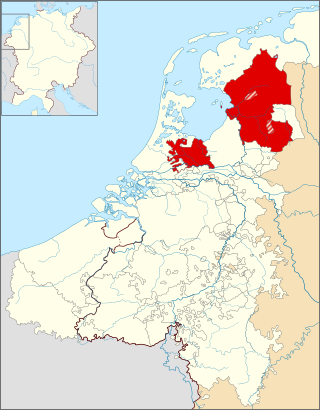
The Bishopric of Utrecht was an ecclesiastical principality of the Holy Roman Empire in the Low Countries, in the present-day Netherlands. From 1024 to 1528, as one of the prince-bishoprics of the Holy Roman Empire, it was ruled by the bishops of Utrecht.
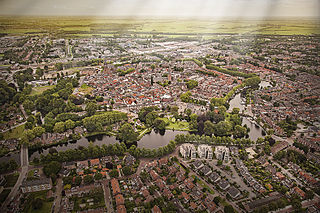
Woerden is a city and a municipality in central Netherlands. Due to its central location between Amsterdam, Rotterdam, The Hague, and Utrecht, and the fact that it has rail and road connections to those cities, it is a popular town for commuters who work in those cities.

Floris V reigned as Count of Holland and Zeeland from 1256 until 1296. His life was documented in detail in the Rijmkroniek by Melis Stoke, his chronicler. He is credited with a mostly peaceful reign, modernizing administration, policies beneficial to trade, generally acting in the interests of his peasants at the expense of nobility, and reclaiming land from the sea. His dramatic murder, said by some to have been arranged by King Edward I of England and Guy, Count of Flanders, made him a hero in Holland.

The counts of Holland ruled over the County of Holland in the Low Countries between the 10th and the 16th century.

The County of Holland was a state of the Holy Roman Empire and from 1433 part of the Burgundian Netherlands, from 1482 part of the Habsburg Netherlands and from 1581 onward the leading province of the Dutch Republic, of which it remained a part until the Batavian Revolution in 1795. The territory of the County of Holland corresponds roughly with the current provinces of North Holland and South Holland in the Netherlands.
Floris III was the count of Holland from 1157 to 1190. He was a son of Dirk VI and Sophia of Rheineck, heiress of Bentheim.

Godfrey I, called the Bearded, the Courageous, or the Great, was the Landgrave of Brabant, Count of Brussels and Leuven (Louvain) from 1095 to his death and Duke of Lower Lorraine from 1106 to 1129. He was also Margrave of Antwerp from 1106 to his death.
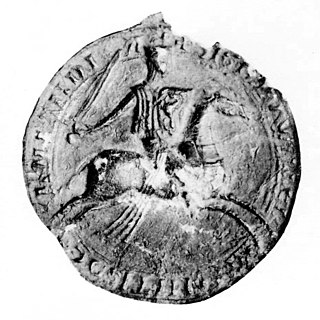
William I was count of Holland from 1203 to 1222. He was the younger son of Floris III and Ada of Huntingdon.

Dirk V was Count of Holland from 1061 to 1091.
Dirk VI was Count of Holland between 1121 and 1157, at first, during his minority, under the regency of his mother Petronilla. He was the son of Count Floris II. After his death he was succeeded by his eldest son Floris III. He married Sofie of Salm, Countess of Rheineck and Bentheim. She was heiress of Bentheim, which she ruled together with her husband and which was inherited by the couple's second son Otto after his parents' death.
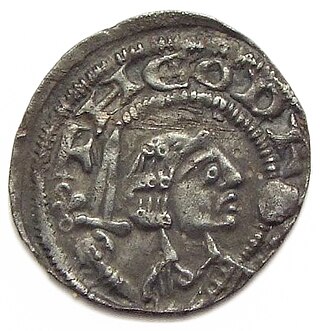
Dirk VII was the count of Holland from 1190 to 1203. He was the elder son of Floris III and Ada of Huntingdon.
Dirk IV was Count of Holland from 1039 to 1049. Dirk's date of birth is unknown but it was probably ca. 1030 or shortly before, he was described as "adolescent" at the time of his death. His base of operations was the stronghold his father built at Vlaardingen. Contemporary chroniclers referred to him as "Theodericus de Phlardirtinga" (Vlaardingen) and as margrave thereof. The exact extent of his domain is not known, but at one time or another it stretched north to at least Rijnsburg and east to roughly Aalburg.
Dirk III was the count with jurisdiction over what would become the county of Holland, often referred to in this period as "West Frisia", from 993 to 27 May 1039. Until 1005, this was under regency of his mother. It is thought that Dirk III went on pilgrimage to the Holy Land around 1030, hence his nickname of Hierosolymita.

Gertrude of Saxony, also known as Gertrude Billung, was a countess of Holland by marriage to Floris I, Count of Holland, and countess of Flanders by marriage to Robert I, Count of Flanders. She was regent of Holland in 1061-1067 during the minority of her son Dirk V, and regent of Flanders during the absence of her spouse in 1086–1093.
The Drenther Crusade was a military campaign launched against the inhabitants of Drenthe with the approval of the Papacy in 1228 and lasting until 1232. It was led by Willibrand, Bishop of Utrecht, commanding an army composed mostly of Frisian crusaders.

Gijsbrecht IV of Amstel or Gijsbrecht IV van Amstel was a powerful lord in the medieval County of Holland and a member of the Van Aemstel family. His territory was Amstelland, and his son was Jan I of Amstel.
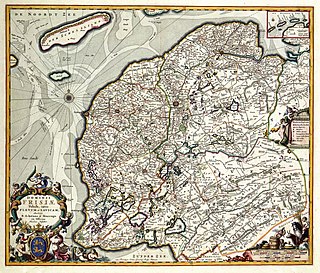
The Seignory of Frisia or Seignory of Friesland was a feudal dominion in the Netherlands. It was formed in 1498 by King Maximilian I and reformed in 1524 when Emperor Charles V conquered Frisia.
Gerulf, also Gerulf the Elder, was the first count of Frisia by this name and an ancestor of the Counts of Holland. Initially dispossessed for opposing emperor Louis the Pious, Gerulf was given back his lands in 839.
Teisterbant was a pagus (province) of Lotharingia/Middle Francia. It was located in the present-day Netherlands, bordered by the rivers Lek and Waal. Modern-day West-Betuwe shares most of the same land including towns such as Batenburg, Vianen, Tiel, Culemborg, Geldermalsen. The historic fiefdoms of Altena, Arkel, Buren, Heusden and Vianen were also part of it.












